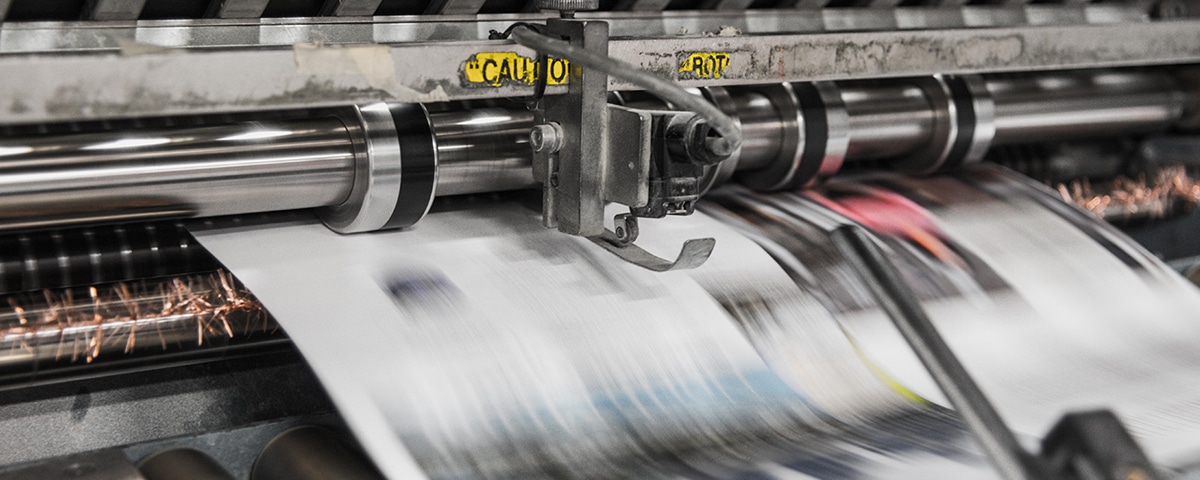When a large U.S. newspaper cuts print publication days or curtails home delivery, headlines may scream media apocalypse.
But for years, newspapers here and there across the country — little noticed beyond their home markets — have gradually scaled back print publishing. Papers of all sizes have considered it. Some are considering it right now.
Reducing print days is often about cutting costs for immediate financial survival. A better approach is to make planned, proactive decisions about downscaling print as a step toward a long-term digital future.
Between 2004 and 2018, at least 104 U.S. newspapers reduced publishing frequency enough to change from “daily” status (publishing three or more times a week) to “weekly” status (printing two or fewer times a week), according to data obtained from the Center for Innovation and Sustainability in Local Media. The center, at the University of North Carolina at Chapel Hill, maintains a proprietary database on more than 9,000 local newspapers.
The total number of newspapers reducing print days in recent years is certainly higher given that the database doesn’t record reductions too small to cross the threshold into weekly status, according to UNC.
Cutting print days has been one path forward for U.S. newspapers in a time of profound disruption. Several chose that path in the last year.
The pursuit of newspaper survival — and success — through reducing print frequency and shifting to digital is the focus of this report, part of the American Press Institute’s series of Strategy Studies. This study is based on interviews with newspaper publishers, editors and executives plus industry experts. Nearly all of them have direct experience with reducing print frequency.
The report explores how newspapers can chart a sustainable path forward by reducing expenses related to print publishing and delivery and building a digital presence better suited for modern reader habits. This path is full of challenges and pitfalls, from picking which days to cut and migrating advertisers to doing the math of delivery logistics and managing internal pushback.
Whether it is exploring approaches to e-editions or ensuring readers are not surprised when papers stop landing on doorsteps, the newspaper leaders interviewed offered best practices for cutting print days.
Chapter 2 of this report, “Two paths to reducing print,” describes a deliberate route to reducing publication days that is focused on long-term sustainability and a transition to digital. It also describes the hard reality faced by publishers who rapidly cut days when faced with mounting financial pressures.
Chapter 3, “Planning to eliminate publishing days,” explores the experiences of newspapers that have cut print days and offers insights, best practices and alternatives. Key issues addressed include identifying which days to cut, understanding the financial benefits and costs, anticipating the impact on advertising and considering changes in subscription pricing.
Chapter 4 of the study concerns the negative reactions a publishing cut will cause. “Facing pushback before and after a reduction” addresses communicating extensively with readers, winning back those who cancel subscriptions and dealing with pushback from within a newspaper’s own ranks. This part also looks at the experience of the New Orleans Times-Picayune and how that became a cautionary tale for many publishers.
Chapter 5 looks to the future and “Improving digital in the shift away from print.” This part explores the difficult truth that cutting print alone is not enough. For newspapers to survive, they must shift readers to digital and improve digital news experiences overall. This section addresses the debate over e-editions, which serve some readers well but may ultimately be a dead end. It also looks at advancing the news experience through better data, websites, mobile apps and email and the need to invest in quality content for both print and digital.
Share with your network
- Cutting print: Making it work when publishing days must go
- Two paths to reducing print: a long-term transformation vs. a rapid cut for survival
- Planning to eliminate print publishing days
- Expecting pushback before and after reducing print days
- Improving digital in the shift away from print
You also might be interested in:
Leaning into local identity and history can move our journalism from ‘we provide facts alone’ to ‘we provide facts and serve other important community functions.’
Here are a few ideas for activating your archives that participants brought to the recent API Summit on Local History, Community and Identity in Nashville — plus some ideas we all brought home to try out in the weeks and months to come.
Programming will involve both publicly available training, including webinars, and resources for the field, such as those from API’s work with influencer collaborations.



